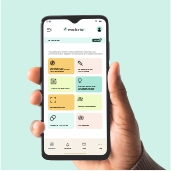Environmental Actions
Environmental Actions
Environmental conditions play a central role in malaria transmission, and the Environmental Actions program within MalariaX focuses on eliminating the places where mosquitos breed and thrive. Malaria is driven not only by mosquito bites but by the environmental factors that allow mosquitoes to multiply. When these conditions are addressed, malaria transmission drops significantly. The Environmental Actions program empowers communities, volunteers, and health workers to identify, report, and eliminate environmental risks quickly and efficiently.
The program allows users to submit detailed environmental reports that highlight stagnant water, poor drainage, blocked gutters, uncovered water containers, waste buildup, and overgrown vegetation. These hazards are documented through geo-tagged photos and descriptions, giving programme managers and environmental health teams real-time insight into conditions that require intervention. The ability to identify these risks quickly allows authorities to act before mosquitoes breed and before infections rise.
Environmental action is one of the few ways communities can participate directly in disease prevention. While medical interventions often require clinics, trained staff, or specialized tools, environmental sanitation can be managed at the grassroots level. Community cleanup efforts, household environmental checks, and regular maintenance of communal areas make a measurable difference in mosquito population control. By providing a structured reporting system, MalariaX strengthens coordination and ensures that environmental issues receive attention rather than being ignored.
The Environmental Actions program also enhances accountability. When reports are visible to program managers, partners, or volunteers, teams can measure how quickly problems are resolved. This transparency motivates quicker responses and encourages communities to take ownership of their surroundings.
Education is another essential component. Through the program, users receive guidance on how to identify risks, clean their environment, and reduce breeding grounds around their homes. This knowledge spreads naturally as volunteers teach families and families teach one another. In many cases, environmental awareness creates long-term habits that improve overall community health beyond malaria.
Environmental improvement is one of the most effective and sustainable ways to break the malaria cycle. By strengthening environmental reporting, encouraging community involvement, and guiding cleanup efforts, the Environmental Actions program contributes directly to reduced transmission and healthier communities.

 Our Programs
Our Programs
